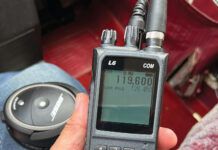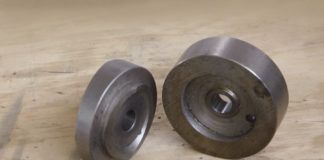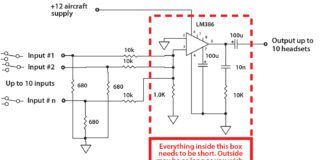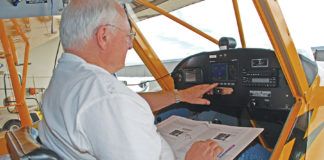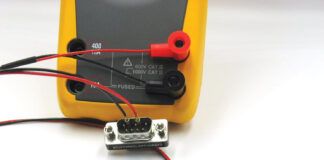Long before I wrote for aviation publications, I was doing testing—of airframes, engines, avionics, and accessories. Flight test was my field, and I have always been given opportunities to evaluate and give feedback on various designs and products. It is rewarding to see changes that you suggest implemented in a design, and you always hope that they are improvements and accepted by the pilots that will come after you. I have never really been an “edge-of-the-envelope” kind of guy however—more like someone who looks to minimize risk and look for incremental improvements—and that affects the kinds of evaluations that I will accept.
I have often described myself as an early adopter of things that are not required to keep me in the air, and a late adopter of flight-critical equipment. Most avionics are a good example of the former. If an EFIS, GPS, or radio gives up the ghost in flight, it is pretty easy to bring the airplane back down in one piece—assuming, of course, that the equipment doesn’t go up in a ball of fire, and I wasn’t foolish enough to make it a sole source of navigation in the clouds.

Engines, powerplant accessories, and ignitions, on the other hand, are mighty important pieces of gear, and while I am qualified in a number of gliders, I prefer to do power-off work in airframes designed specifically for quiet flight. The same thing is true for any part of the power train—from the fuel caps all the way to the exhaust pipes. I want those reliable, and reliability is measured primarily by how many hours the particular design has accumulated. While I always try to have backup plans for every conceivable contingency when I fly, new essential equipment causes me to have backups to those backups—or sometimes to just pass the chance for potentially exciting flight testing on to someone else.
The best test pilots I know are very reserved people that go out of their way not to experience excitement, but to minimize it. Boring people actually. The ones that have lived the longest usually stop after one beer, and are often headed home early to study for the next day’s flight. I know that is a hard idea to grasp when you’re young and looking for excitement, but when you are old and looking back on some of the exciting times you’ve had, you are sort of glad that they are in your past—and thankful that you’re still alive to reminisce.
But deciding to buy or try new equipment isn’t just a matter of personal safety; it can also have a large effect on your pocketbook or bank account. Experimental aviation is known for radical ideas and the people who think them up. There are countless designs that looked like the upcoming salvation of aviation itself—yet they quietly faded into the background when reality sank in, funding dried up, and problems cropped up with no solution. Unfortunately, the early adopters who provided deposits, which the developer used to pay for his hangar rent during the design phase, never saw a product in return for their cash. The frequency with which this happens has always astounded me, for again and again, we see companies both big and small give up on their seemingly foolproof ideas, be they for airframes, engines, or avionics.
Coming up with the idea for a new product is easy. Coming up with a design that promises to deliver on that vision is harder. Testing the prototype and solving the inevitable problems that crop up can drain the resources of the best capitalized company. And finally, bringing the prototype all the way into production and actually shipping finished items to customers is a hurdle that many never achieve. The end result of this difficult chain of development often leads to bankruptcy, disillusionment, and unhappy customers.
How can you keep from becoming one of those unhappy and unfulfilled souls? By applying some strict rules about where you will and will not spend your money, for starters. The same rules apply as they do in non-aviation endeavors. Learn the laws of physics and know that they can’t be broken. You are not going to go 250 knots on 65 horsepower unless you are doing it pointed straight down from a great height. Electronics and software development cost money—and while Apple can sometimes give away cell phones, they can do this because they have amortized the development cost over millions of units. In aviation, unit development runs are numbered in the thousands, or sometimes the hundreds. If a developer is going to pay back the costs of putting a new EFIS on the market, they are going to have to charge what it cost to pay their salaries for the years of development.
When a company makes promises that just don’t seem right, they probably aren’t. Use your intuition, look at history, and see how likely it is that someone has found a completely new law of physics, finance, or of nature. In most cases, it’s highly unlikely. If someone presents you with the product of your dreams, pinch yourself—you might just wake up to find that yes, indeed, your dream was about to turn into a nightmare.
Being an early adopter is OK, so long as you go into it willing to have the product fail and to lose what you have invested, in both time and money. If you have to do a great deal of modification to your airframe to install a new design, understand that you might have to do a lot of modification to back out of the product if it fails. We don’t get anywhere without someone taking the risk, but make sure that you can tolerate failure before you take the plunge. Many of us are used to taking financial risks, but failures in aviation can take more than your money—they can cost you your life.
Keep your eyes open, and remember the old saying: If it looks too good to be true, it’s probably time to look somewhere else.










